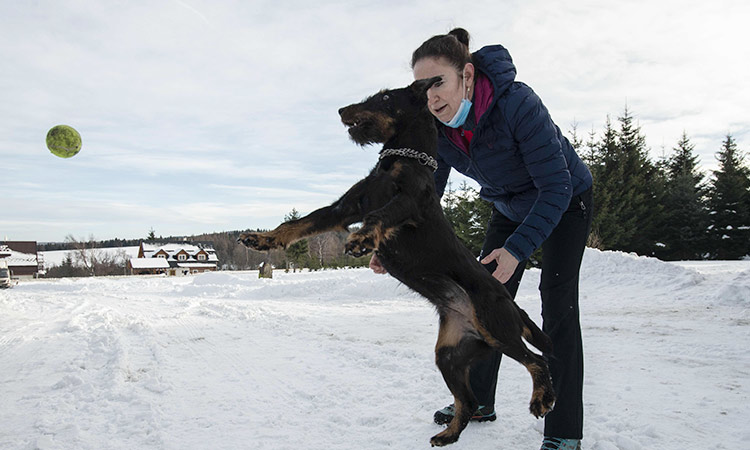Study suggests stray dogs may be the origin of the coronavirus pandemic

This image has been used for illustrative purpose.
Ever since the outbreak of the SARS-CoV-2 virus, scientists have been scrambling to identify the species of origin to understand how the new coronavirus first leapt from its animal hosts to humans and now, researchers propose that stray dogs may have been the origin of the current COVID-19 pandemic.
COVID-19 could have been transmitted to humans by stray dogs --specifically dog intestines - which had eaten bat meat, according to a study, published in the journal Molecular Biology and Evolution.
The disease may have rapidly evolved in the intestines of dogs that consumed bats carrying an ancestor coronavirus.
"Our observations have allowed the formation of a new hypothesis for the origin and initial transmission of SARS-CoV-2," said study researcher Xuhua Xia from the University of Ottawa in Canada.

"The ancestor of SARS-CoV-2 and its nearest relative, a bat coronavirus, infected the intestine of canids, most likely resulting in the rapid evolution of the virus in canids and its jump into humans. This suggests the importance of monitoring SARS-like coronaviruses in feral dogs in the fight against SARS-CoV-2," Xia elaborated.
Xia has long-studied the molecular signatures of viruses in different hosts.
When viruses invade a host, their genomes often bear the battle scars from fighting off and evading the host's immune system through changes and adaptations found within their genomes.
Humans and mammals have a key antiviral sentinel protein, called ZAP, which can stop a virus in its tracks by preventing its multiplication in the host and degrading its genome.
READ MORE
Dogs are better than human: Dumped baby girl saved by stray dogs
Coronavirus outbreak: China's Shenzhen bans citizens from consuming cats and dogs
China declares dogs are companions and should not be eaten due to coronavirus outbreak
The viral target is a pair of chemical letters, called CpG dinucleotides, within its RNA genome.
CpG dinucleotides act as a signpost that a person's immune system uses to seek and destroy a virus. ZAP patrols human lungs and is made in large amounts in the bone marrow and lymph nodes, where the immune system first primes its attack.
For the findings, the researchers examined all 1252 full-length betacoronavirus genomes deposited into GenBank to date.
Xia found that SARS-CoV-2 and its most closely related known relative, a bat coronavirus (BatCoV RaTG13), have the lowest amount of CpG among its close coronavirus relatives.
This suggests that mammalian digestive systems are likely to be a key target infected by coronaviruses.







